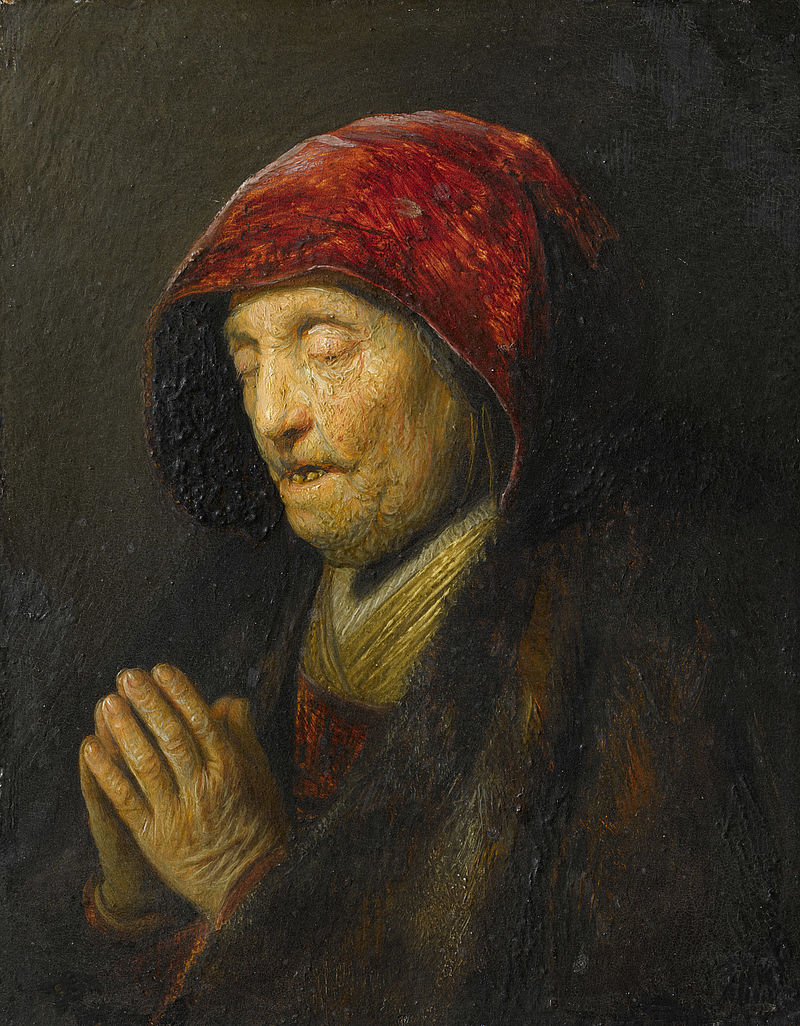Old Woman Praying
Rembrandt Harmensz. van Rijn (1606 - 1669)
Framesize 29.90 x 26.30 x 3.50 cm
This small-scale early work is an excellent example of Rembrandt’s special sense for the material. Many coats of varnish, with the occasional white heightening, make the thin, wrinkled skin of the hands appear almost transparent. By contrast, the wizened, almost toothless face of the old woman rapt in prayer seems as though formed by paint, like the hood in madder lake. He used a brush-handle to achieve the texture of the fur. The picture support is particularly interesting; Rembrandt used a copperplate. This material is not unusual, since it lends the colours a luminous quality – but he made use of it only three times (Stockholm National Museum, NM 5324 and Mauritshuis Den Haag, 598; both also painted in Leiden in 1629/30).
Of major importance is the grounding with gold leaf, which lends a glow to the chiaroscuro contrasts that make up the picture. The combination of fine painting and “rower manier”, which characterises his later work and was largely rejected by contemporary critics, makes this work a real event.
The model is presumably Rembrandt’s mother, Cornelia N. Willemsdochter van Zuytbroek (died 1640). Like other members of the family, she was frequently a model for work painted during his years in Leiden. This portrait (known also since 1762 as Rembrandt’s Mother Praying) is, however, not a portrait of that person, but a so-called tronie (Dutch: face/head). Jan Lievens contributed decisively to the development of this genre, much sought-after by collectors. No specific person is represented; although the artist worked from a live model, the idea was to make a character study of a particular type.
OEHRING Erika: Rembrandt Harmensz. van Rijn, Old woman praying, in: DUCKE Astrid, HABERSATTER Thomas, OEHRING Erika: Masterworks. Residenzgalerie Salzburg. Salzburg 2015, p. 54
Download of this artwork is permitted for private use only.
Here you will find our license for non-commercial use.


